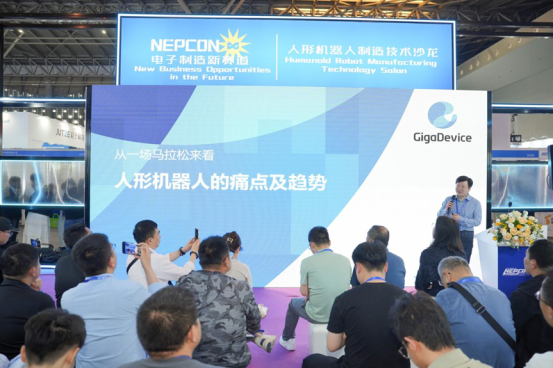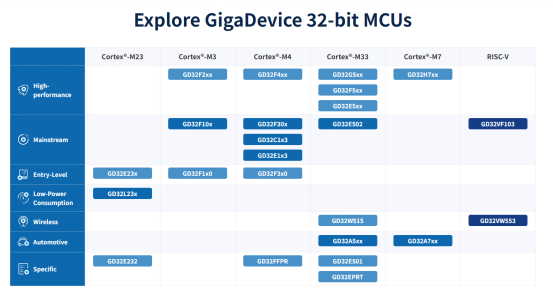Reflections Behind the Humanoid Robot Marathon: How GigaDevice Empowers the Robotics Industry
2025-05-22
Humanoid robots are stepping into the spotlight—literally. On April 19 in Beijing's Yizhuang district, a one-of-a-kind event captured national attention: a marathon featuring over 20 humanoid robots in a dynamic, head-to-head showdown. This unforgettable spectacle wasn't just about performance—it marked a powerful statement on how far humanoid robotics have come and how close they are to seamlessly integrating into everyday life. The future of robotics isn't just coming—it's running full speed ahead.
Recently, at the 33rd NEPCON China in Shanghai, GigaDevice presented a lineup of innovative products. During a special salon on humanoid robot manufacturing technologies, Li Yi, Director of Product Marketing at GigaDevice's MCU Business Unit, delivered a keynote titled "What a Marathon Reveals About the Challenges and Future of Humanoid Robots."

Li Yi, Director of Product Marketing, MCU Business Unit, GigaDevice
A typical humanoid robot features around 20 degrees of freedom (DoF), each joint carrying distinct load requirements. Executing even a single motion requires highly coordinated interplay between joints. Any lack of synchronization — for instance, a fast-moving hand and a slow-moving leg — could easily cause the robot to stumble.
Li Yi emphasized two critical factors:
1.Each joint's hardware design must be robust and precise.
2.The joints must be interconnected through a real-time, closed-loop communication system, commonly built on the EtherCAT® standard, to ensure high-efficiency data exchange.
He explained: "Our GD32G553 series high-performance MCUs, built on the Arm® Cortex®-M33 core with clock speeds up to 216 MHz, are ideal for controlling large joints. For joints requiring higher motion precision and real-time algorithm performance, the GD32H7 series, based on the Arm® Cortex®-M7 core and running at 600 MHz, is a better fit. Some clients use over 20 M7-based MCUs and more than 10 M33-based MCUs in a single robot to manage different joint tasks. These MCUs communicate via an internal bus system that ensures motion and data synchronization across all joints. The system can achieve jitter control at the nanosecond level, with synchronization cycles as short as 125 microseconds — or even faster."

GD32 MCU Product Portfolio
Although current humanoid robots move at speeds of only 10 km/h, Li predicts they will outperform even top athletes within 5 to 10 years. However, with this performance boost comes increased safety risk — frequent malfunctions could result in serious consequences, echoing the challenges faced by autonomous vehicles.
He cautioned: "Just like autonomous driving, the development of humanoid robots must take a holistic approach to functional safety. It requires systematic planning of the entire electrical and electronic architecture, along with safety specifications for every component. Only with a comprehensive safety framework can we achieve truly safe and commercially viable robotic systems."

Functional Safety Delivery Package
In addition to functional safety, Li also addressed the often-overlooked issue of information security. No robotics company wants its proprietary designs compromised or reverse-engineered by competitors. Solving this issue demands not only improved industry standards and legal frameworks, but also tight software-hardware collaboration across the supply chain to eliminate potential security risks.
Notably, GigaDevice has developed targeted solutions in both functional and information security to ensure chip-level protection for its clients.

Information Security Delivery Package
To conclude, Li offered a brief overview of the GigaDevice MCU ecosystem, highlighting a range of tools and development resources. As a long-time contributor to the robotics sector, GigaDevice supports over 127 robot-related clients worldwide, offering end-to-end development assistance and driving forward domestic robotics innovation.
Through years of technological expertise and proven solutions, GigaDevice has successfully empowered many leading embodied AI enterprises. With a comprehensive product portfolio spanning MCUs, sensors, and memory, the company delivers full-stack, chip-level support — from perception and decision-making to actuation — powering the next generation of humanoid robots.



























































